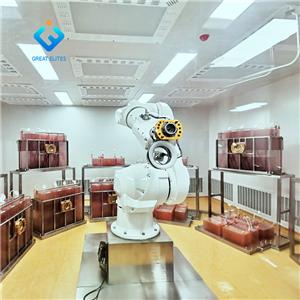What is the type of cell culture medium and how to select it?
Animal cell culture is to take relevant tissues from the animal body, disperse them into individual cells (using trypsin or collagenase), and then put them in a suitable culture medium to allow these cells to grow and proliferate.
What are the types of cell culture media?
According to the development history of cell culture media, cell culture media can be roughly divided into several types, such as balanced salt solution, natural cell culture media, synthetic cell culture media, serum-free cell culture media, and cell culture media with limited chemical components.
1. DMEM cell culture medium
DMEM (Dulbecco's modified minimal essential medium) is obtained by Dulbecco on the basis of MEM medium. The amount of each component is doubled and divided into two types: low sugar (1000mg / L) and high sugar (4500mg / L). The cells grow fast. It is better to use high glucose to culture tumor cells with poor adhesion and clones, and it is often used to culture myeloma cells of hybridoma and transformed cells transfected with DNA.
2. Neuronal basic culture medium
It can provide basic nutrients for the growth of neurons.
3. Ipl-41 insect medium
Ipl-41 insect medium is designed for large-scale expansion of Spodoptera frugiperda cell line, and is also commonly used for protein expression by baculovirus expression system (BEVS). Ipl-41 medium is an improvement on the original IPL formula. It was developed by Weiss et al. Of the insect pathology laboratory of the United States Department of agriculture. It was used for large-scale expansion of Spodoptera meadowensis derived cell lines. Weiss added fetal bovine serum and TPB medium to the basic medium, and successfully realized the large-scale continuous culture of ipl-21 AE (III) cell line.
The medium is mainly used for culturing and maintaining Lepidoptera derived cell lines and amplifying viruses of these cell lines. Ipl-41 medium was also used to express baculovirus recombinant protein in serum-free Spodoptera cells.
1.1 balanced salt solution (BSS)
BSS is mainly composed of inorganic salts and glucose. Its function is to maintain the osmotic pressure balance of cells, maintain the pH stability and provide simple nutrition. It is mainly used for rinsing cells and preparing other reagents.
At present, the serum used for cell culture is mainly bovine serum, and some special cells are also cultured with human serum and horse serum. Bovine serum is suitable for most mammalian cells, but it is not ruled out that it is more suitable to use other animal serum when culturing certain cells. The serum contains various plasma proteins, polypeptides, fats, carbohydrates, growth factors, hormones, inorganic substances, etc. these substances achieve physiological balance in promoting cell growth or inhibiting growth activity.
1.2 synthetic cell culture medium
Synthetic culture medium is a kind of culture medium which is synthesized, artificially designed and prepared with chemical substances according to the composition of natural culture medium. The earliest developed basic medium (MEM) is essentially a pH buffered isotonic mixture containing salt, amino acids, vitamins and other essential nutrients. On this basis, DMEM, IMDM, ham F12, prmi1640 and other synthetic cell culture media have been continuously developed.




